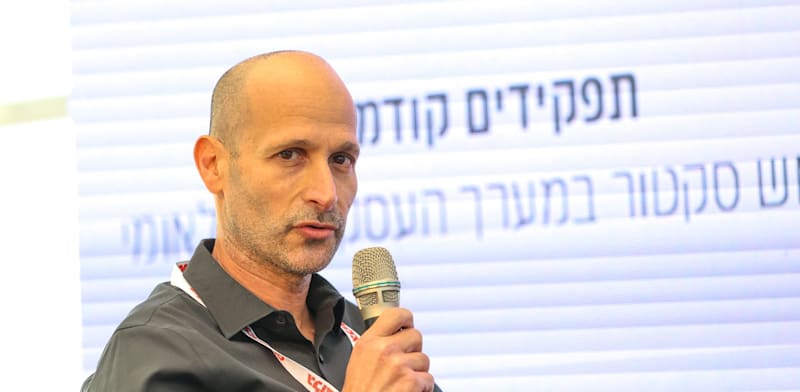Areas of demand have become areas of supply, and homebuyers now have a good opportunity to get a bargain when purchasing homes, especially new apartments, in and around Tel Aviv – this is shown by two indices that attempt to track the state of the market.
The first index is based on data from Yad2’s online bulletin board, and refers to the ratio between the number of ads for home sales and the number of online views of them. The second index has been developed by “Globes,” and examines the supply of new homes against their monthly sales rate.
The Yad2 index is being published ahead of its large “Nadlan Nation” housing fair, which will be held at Expo Tel Aviv this weekend, and will bring together, according to the organizers, “Hundreds of projects from all over the country, with discounts that can reach NIS 500,000 per apartment,” with supporting professional advice.
The indices: Every city was measured by two segments
The index called by Yad2 the “market heat index,” is based on the ratio between supply and demand in numbers ranging from 0 and up. The higher the value, the more interest there is on average for each listing for sale. Higher numbers mean the market is more in favor of sellers, with high demand relative to the existing supply. A low number shows the reverse situation, with fewer buyers interested in available homes. This can result from both low demand and high supply, but regardless it is a “buyer’s market.”
Because the heat index is primarily focused on second-hand apartments, there are sometimes contradictions between it and the Central Bureau of Statistics apartment supply data, but these can be explained: there are cities like Beer Yaakov, Kiryat Ono, Kiryat Bialik, Sderot, Netivot and Ofakim where new construction has completely taken over the market and second-hand apartment deals are few.
On the other hand, in cities like Kfar Saba, Holon, Hadera and Haifa, the bulk of the market comprises second-hand apartments, because there is relatively little new construction there.
When the heat index is particularly high – 70 or higher, it means that demand far exceeds supply. The places that characterize this situation are mainly haredi cities like Beitar Illit, Modi’in Illit and Beit Shemesh, and peripheral cities like Yokneam, Netivot, Sderot and Kiryat Yam.
In Netivot and Sderot, many deals are by young couples purchasing new apartments, especially as part of government subsidized programs. Consequently those looking for second-hand apartments or apartments at market prices have difficulty finding them.
RELATED ARTICLES
A strong seller’s market is one that receives a score of 55-69 on the heat index. Yad2 notes that in such a market, a more moderate excess demand can be seen than in a “very strong seller’s market.” Examples of this can be seen in cities like Afula, Hadera, Kiryat Motzkin, Dimona, Kiryat Gat and Petah Tikva.
A neutral market is one that receives a score of 44-55 and includes cities such as Kiryat Malachi, Beer Yaakov, Rishon LeZion, Rosh Ha’ayin, Rehovot, Ashdod, Netanya, Beersheva, Harish and Kiryat Ono, where supply of apartments matches demand.
The data is more interesting from the buyers’ perspective when it comes to cities with scores of 28-44. Yad2 describes these as a “strong buyers’ market,” because of the large supply in relation to demand. In this category are cities such as Holon, Ramat Gan, Givatayim, Kfar Saba, Bat Yam, Or Akiva, Kfar Yona, Herzliya, Caesarea and Ra’anana.
The final category is “very strong buyers’ market,” with a score of 27 and below. In this category are cities like Tel Aviv, Hod Hasharon and Ramat Hasharon, where there are a large number of apartments for sale (second-hand and new), but few buyers or those interested.
Second-hand: The “expensive” cities are hit harder
The index’s findings are very interesting. “The prolonged war is affecting almost every aspect of the housing market from high interest rates, to the shortage of construction workers, to the growing concern among buyers, especially in expensive areas that were hit harder by the war. The result is a non-homogeneous market, in which there are clear gaps between areas with excess supply and those with excess demand,” says Yad2 CMO Ayelet Nitsan.
Nitsan says, “Yad2’s ‘heat index’ data illustrates the trend: in cities like Tel Aviv, Ramat Hasharon and Hod Hasharon, which are among the most expensive in Israel, a very strong buyers’ market can be seen, meaning there are many apartments for sale but less demand.
“A similar phenomenon is also seen in cities like Raanana, Herzliya, Ramat Gan and Kfar Saba. It is precisely in these areas, where the prevailing feeling is that ‘prices are too high,’ that the greatest opportunities for negotiations, discounts and benefits from developers arise.”
“At the same time, there are cities in the periphery or the periphery of the center where there is still excess demand – such as Petah Tikva, Kiryat Gat, Hadera and Dimona – and haredi and cities with very young populations like Modi’in Illit and Beitar Illit, where the heat indices are particularly high.
“Once you understand what’s out there and know where to look, you can come up with particularly lucrative deals.”
New apartments: Cities where it will take four years to sell inventory
While the focus of Yad2’s heat index is mainly second-hand apartments, “Globes” examined another index based on data from the Central Bureau of Statistics and the Israel Tax Authority to examine market sentiment for new homes.
This index is based on the ratio between the existing supply of new apartments and the monthly rate of sales of new apartments in the last six months.
The resulting ratio is the theoretical number of months that it will take to sell the existing inventory of apartments. The bigger the number means the market is a “buyer’s market.” The supply of new homes in Tel Aviv reached 10,140 at the end of May, according to the Central Bureau of Statistics, while the monthly sales rate of new apartments in the city reached 201. According to “Globes” index, this large inventory is enough for 50 months of sales.
This is an unbearable situation for developers, and a situation in which homebuyers can bargain with both developers and homeowners. Tel Aviv is “marked” by both indices as the most convenient city for buyers, and consequently apartment prices in the Tel Aviv district have recorded a cumulative decline of almost 3% in the last three price indices.
Ramat Gan is also marked by the Yad2 index and “Globes” index as a strong buyer’s market, with a stock of new 3,477 apartments of 3,477 should take 48 months to sell. Bat Yam ranks stronger in the “Globes” index than the Yad2 heat index, in terms of the buyers’ ability to bargain, on the purchase of a new home.
Rehovot came top of the “Globes” index, with an inventory of 1,289 new apartments for sale, which according to the rate of sales of new apartments in the city, should take 52 months to sell. In the heat index, Rehovot had a neutral rating, because potential apartment buyers prefer second-hand apartments. But in Rehovot buyers are in a strong situation when bargaining with real estate developers for new homes.
However, even in cities that came in low in the “Globes” ranking – Rishon LeZion, Hadera, Herzliya and Ashdod – it seems that buyers can bargain with developers in purchasing an apartment, since ultimately developers do not want to wait too long before selling their inventory.
Published by Globes, Israel business news – en.globes.co.il – on July 23, 2025.
© Copyright of Globes Publisher Itonut (1983) Ltd., 2025.








